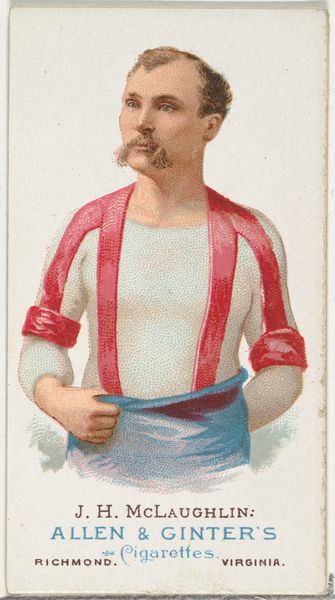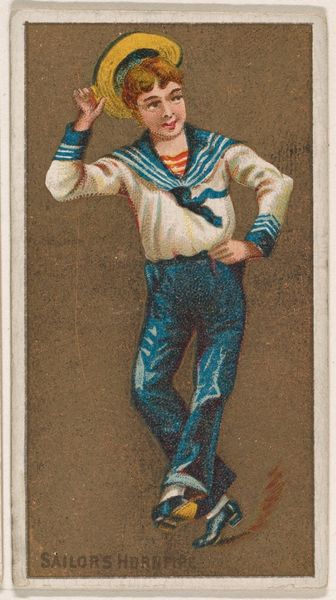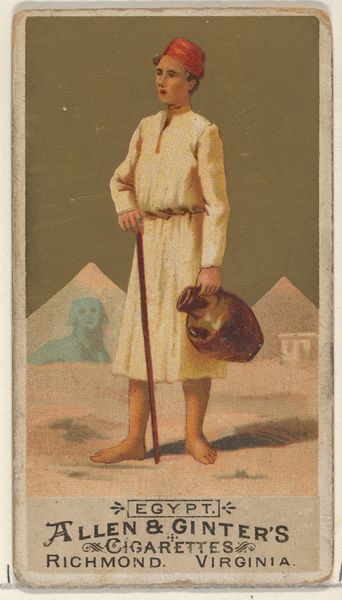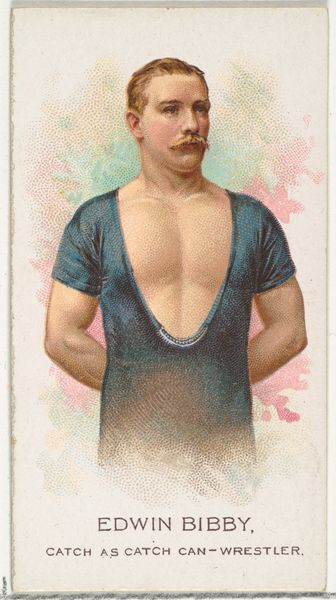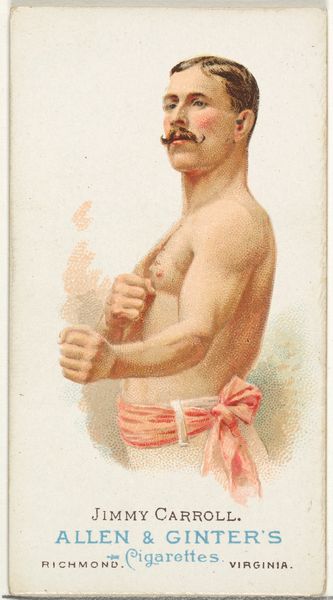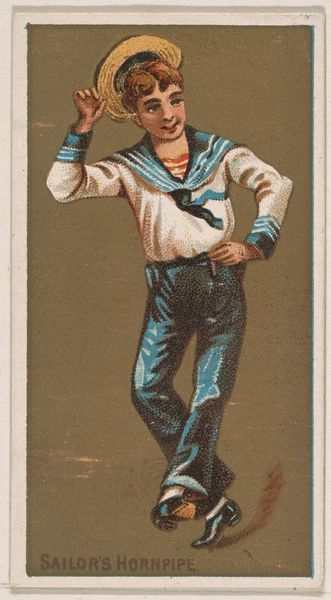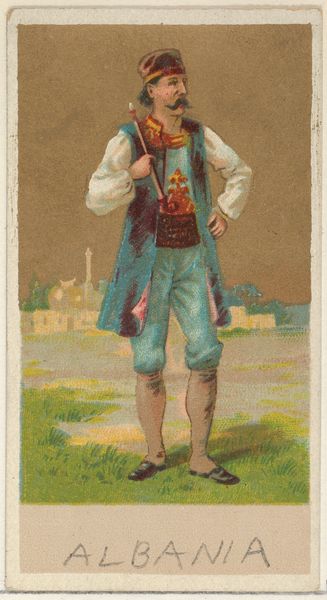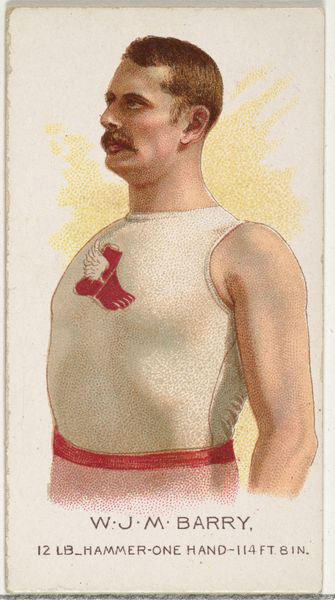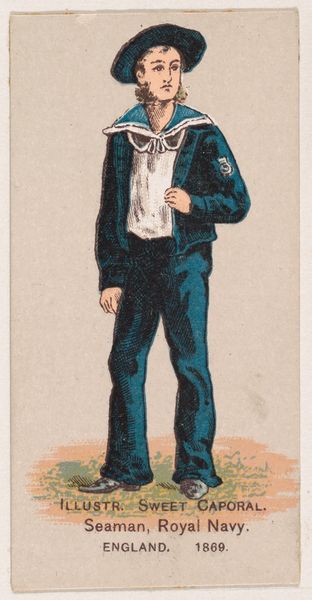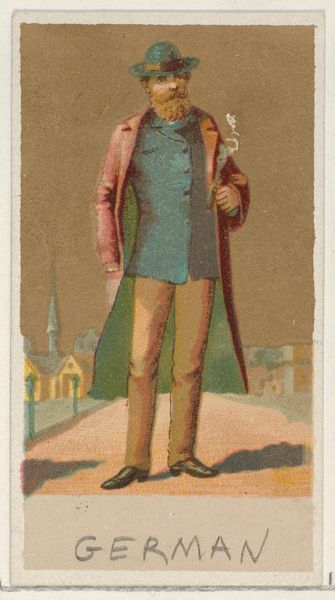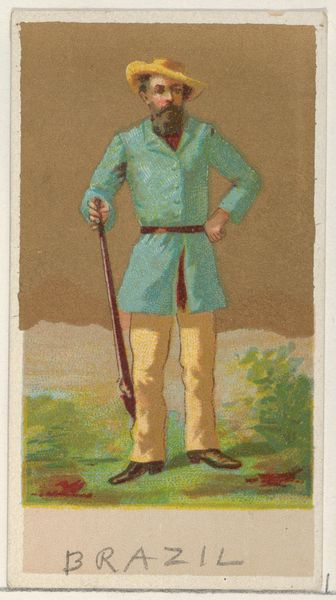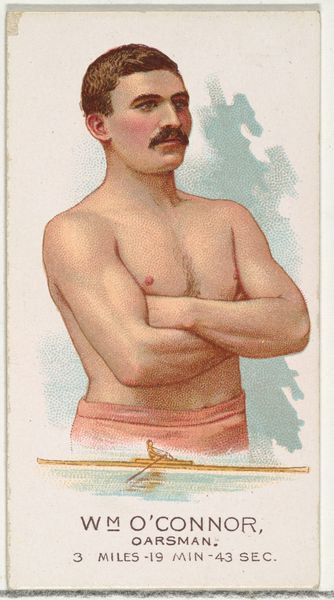
John McMahon, Wrestler, from World's Champions, Series 1 (N28) for Allen & Ginter Cigarettes 1887
0:00
0:00
drawing, coloured-pencil, print
#
portrait
#
drawing
#
coloured-pencil
# print
#
caricature
#
coloured pencil
#
history-painting
Dimensions: Sheet: 2 3/4 x 1 1/2 in. (7 x 3.8 cm)
Copyright: Public Domain
Editor: This is John McMahon, Wrestler, a coloured pencil print from 1887 by Allen & Ginter Cigarettes. It’s part of the World's Champions series. I’m immediately struck by how… commercial it feels, almost like an advertisement attempting to portray McMahon as a heroic figure. How do you interpret this work, especially considering its origins? Curator: It's crucial to remember that this was created during a time of intense social and industrial change, as well as rapidly expanding commercial markets. These cards, distributed with cigarettes, actively participated in shaping cultural ideals around masculinity and athletic prowess. Notice how McMahon is posed—stoic, powerful—suggesting a certain dominant archetype that resonates with late 19th-century notions of American strength and virility. Editor: That's fascinating. So you're saying it's not just a portrait of an athlete but also a reinforcement of certain cultural expectations? Curator: Exactly. Think about who the target audience was for these cigarettes and cards: largely white, middle-class men. What messages are being subtly communicated through images like this about who holds power, who is celebrated, and what kinds of bodies are deemed valuable? Consider McMahon's whiteness against the backdrop of increasing racial tensions and segregation, and how it creates a very clear hierarchy. Editor: I see. The act of distributing this image with a product reinforces those ideas every time someone purchases it. The commercial nature almost normalizes these hierarchies. Curator: Precisely. It becomes part of everyday life. Do you think viewing it in this way shifts your understanding of its aesthetic value or purpose? Editor: Definitely. It makes me question who benefits from these images and whose stories are being left out. Thanks to this approach, what seemed like a simple portrait has opened up a lot of interesting points of reflection. Curator: I find that recognizing the intersection of commerce, power, and representation illuminates these seemingly straightforward portraits in profound ways.
Comments
No comments
Be the first to comment and join the conversation on the ultimate creative platform.
